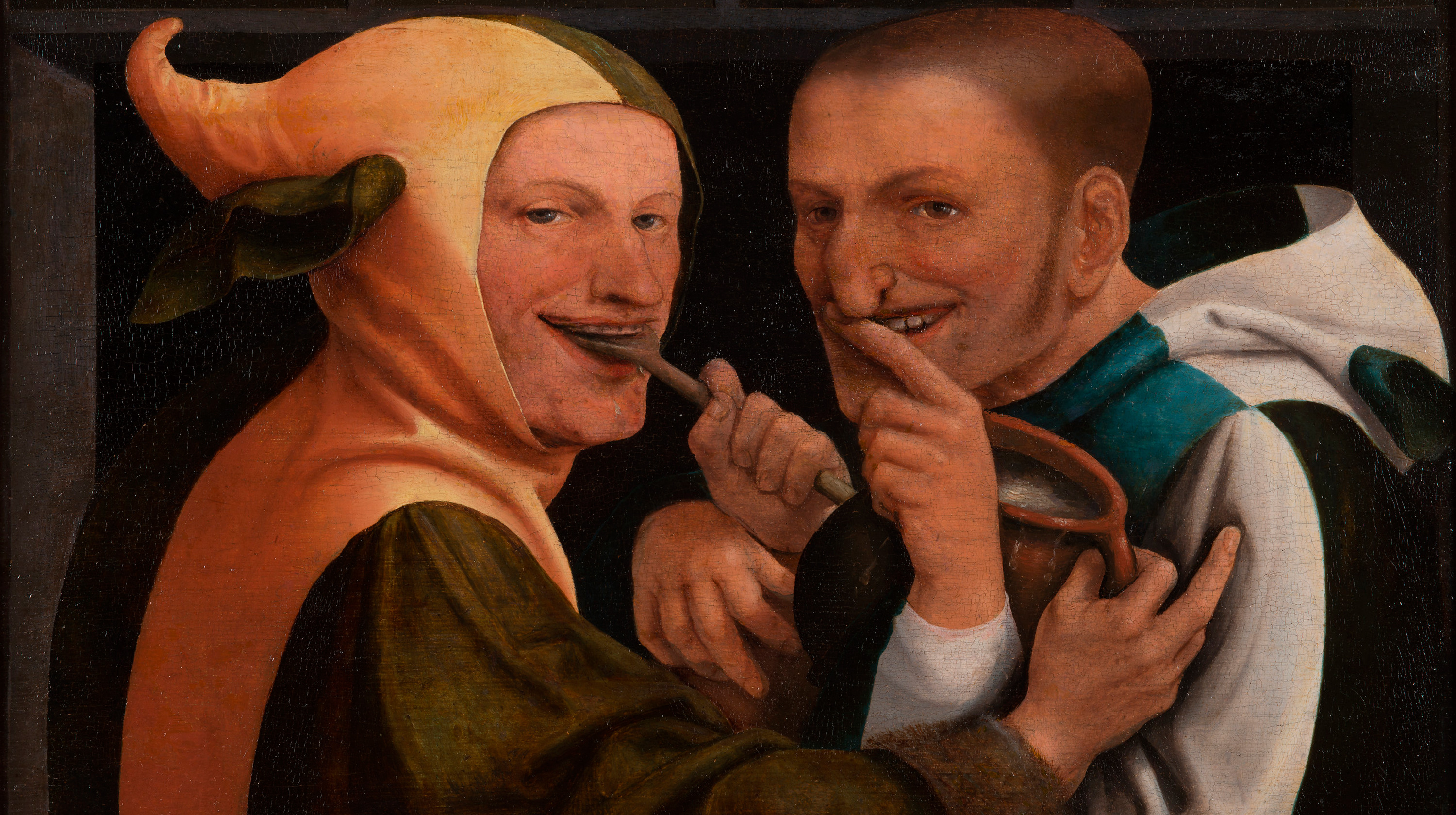What is Flemish art? Who was making art in this region of the world during centuries of tremendous change, from the 1500s to the 1700s? With the exhibition Saints, Sinners, Lovers, and Fools: 300 Years of Flemish Masterworks, opening October 16, as our springboard, join international and local scholars for a deeper look into this dynamic place and time.
Flemish Art in Context is a course with four sessions. Over these sessions, we will look more closely at the works on view, fall in love with the visual richness of Flemish art, and return to the galleries with a newfound understanding of what was behind their production.
You may register for individual sessions or the entire course. These sessions will take place at the museum in Sharp Auditorium and online via livestream. To register for the in-person course in Sharp Auditorium, please purchase an onsite ticket. To register for the online livestream of the course, please purchase an online ticket.
All course registrants will receive a link to the recorded course session, which will be available to view for 30 days after the course. You do not need to purchase both tickets to access a recording of the course.
Ticketing Information
| Museum Friends | $75 for the full course | $20 for an individual session | On sale 9/12 |
| Members | $85 for the full course | $22.50 for an individual session | On sale 9/14 |
| Nonmembers | $95 for the full course | $25 for an individual session | On sale 9/16 |
| Students | $45 for the full course | $10 for an individual session | On sale 9/16 |
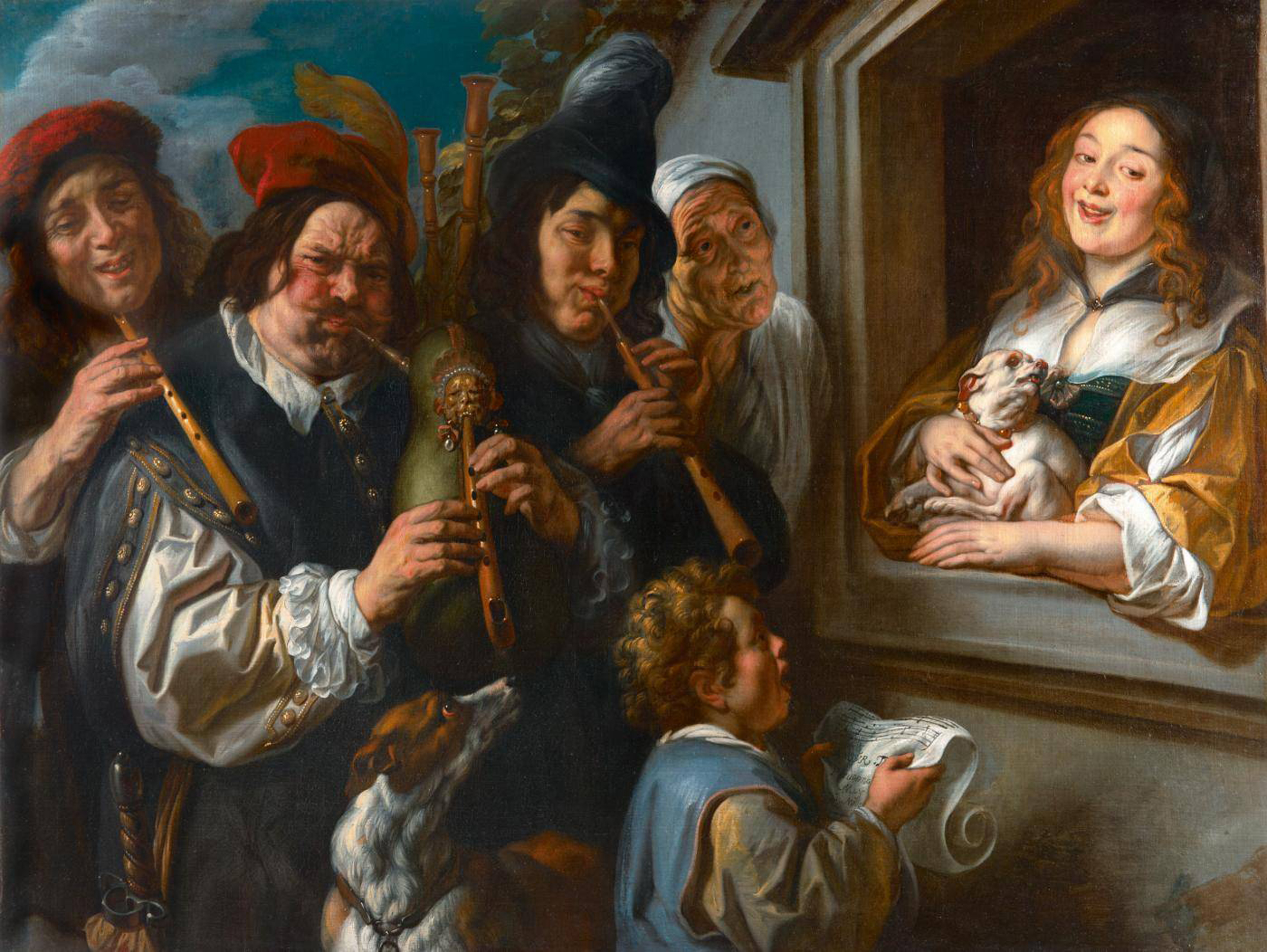
Jacob Jordaens, Serenade, about 1640– 45. Oil paint on canvas; 54 1/8 × 70 1/2 in. © The Phoebus Foundation, Antwerp.
An Introduction to Flemish Art
Session 1: Saturday, October 15, 10:30 am
In this introductory lecture, Katharina Van Cauteren, Chief of Staff of The Phoebus Foundation and organizing curator of the exhibition Saints, Sinners, Lovers, and Fools: 300 Years of Flemish Masterworks, will take the audience on a journey across more than three centuries of Flemish art and history.
At the end of the Middle Ages, the small patch of land that we now call Flanders was the center of the world. Cities such as Antwerp, Bruges, and Ghent were the New York, London, and Hong Kong of the fifteenth and early sixteenth centuries. An art and luxury market soon emerged here that had no equal anywhere else North of the Alps. Van Cauteren will tell this exceptional story through the masterpieces of artists from the Southern Netherlands such as Hans Memling and Quinten Metsys, Jan Gossaert, Peter Paul Rubens, Antoon Van Dyck, and Jacob Jordaens.
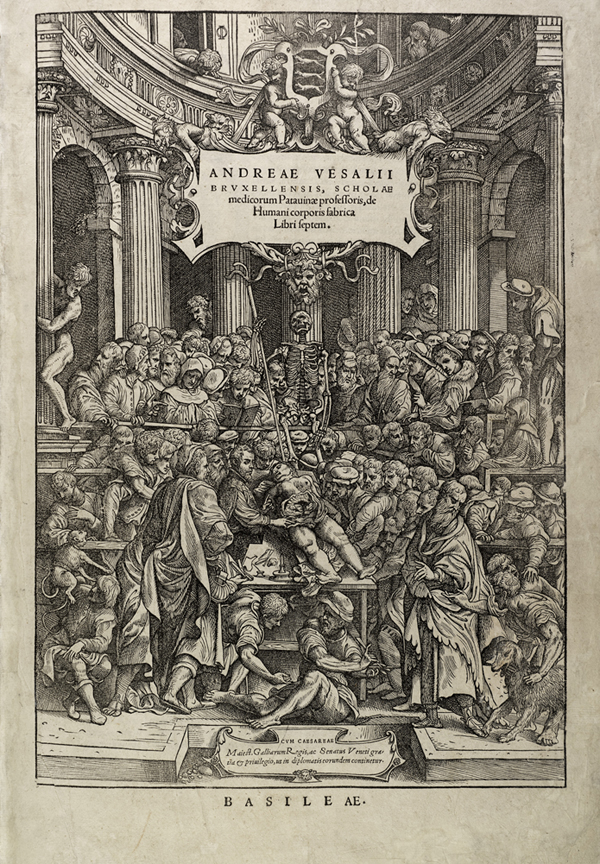
Andreas Vesalius, De humani corporis fabrica libri septem (On the Fabric of the Human Body in Seven Books) (detail), 1543. Ink on paper and leather binding; 16 1/2 × 25 3/8 in. © The Phoebus Foundation, Antwerp.
Prints and the Production of Knowledge
Session 2: Saturday, October 29, 2 pm
In this session, Geoffrey Shamos, Director of the Vicki Myhren Gallery at the University of Denver, will discuss the proliferation of printed images produced in the Netherlands during the sixteenth century. We will learn how developments in print production contributed to artistic innovation and the dissemination of knowledge.
The establishment of large workshops streamlined the printmaking process through a division of labor, helping to secure a dominant position for Netherlandish printmaking throughout Northern Europe, with Antwerp leading the way. Easily reproduced and relatively affordable, prints could reach a wider audience.
Harnessed by an array of artists, scholars, and scientists, including prominent figures like Andreas Vesalius and Abraham Ortelius, printed images played an important role in transmitting new discoveries and ideas during this formative period in the Netherlands and across Early Modern Europe.
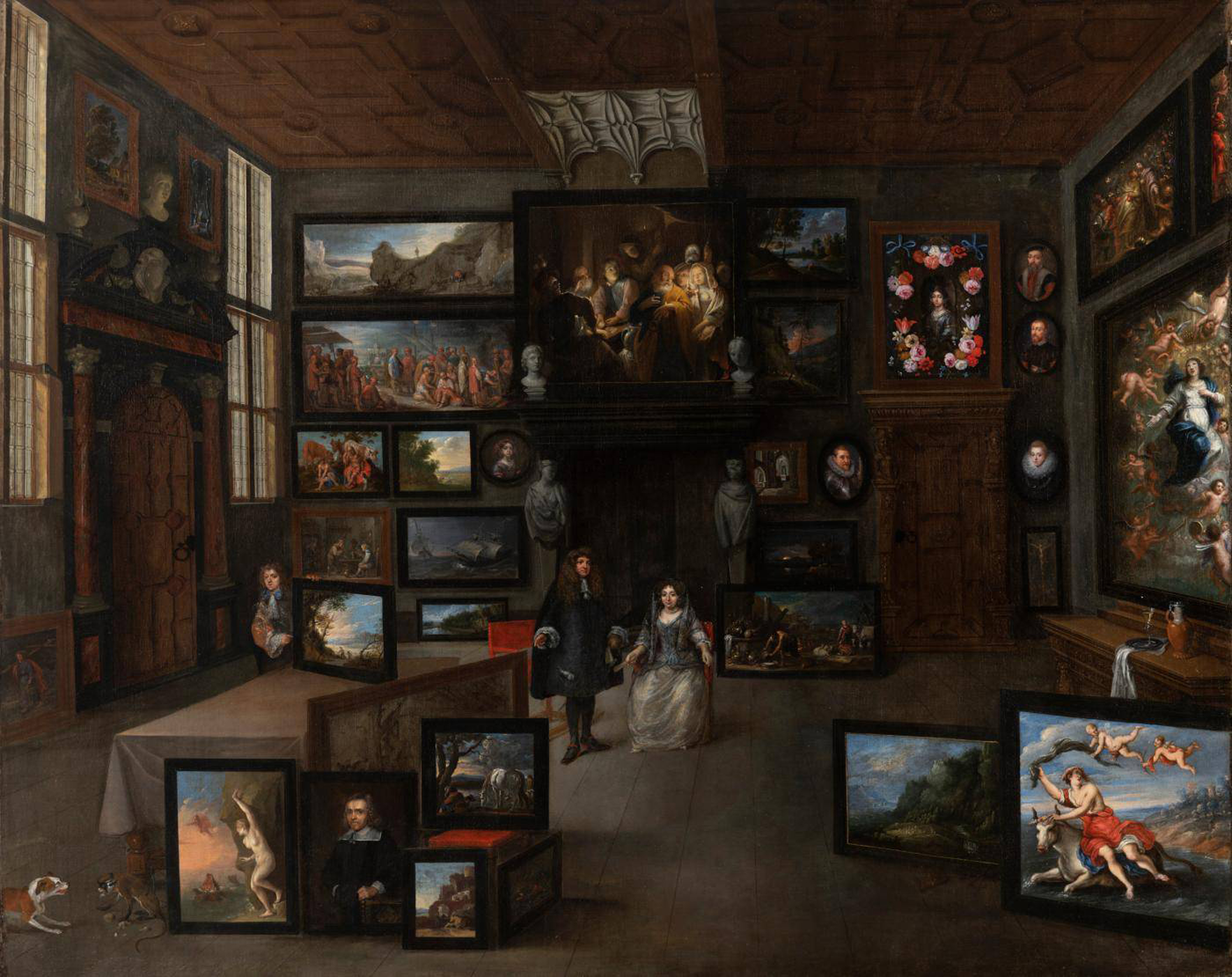
Peeter Neefs II and Gillis van Tilborgh, Portrait of an Elegant Couple in an Art Cabinet, 1652 and about 1675. Oil paint on canvas; 51 5/8 x 62 3/8 in. © The Phoebus Foundation, Antwerp.
Collecting and Curiosity
Session 3: Saturday, November 19, 2 pm
In this session, Geoffrey Shamos, Director of the Vicki Myhren Gallery at the University of Denver, will examine early modern cabinets of curiosity, which often included an assortment of objects from nature and science alongside art, antiquities, and ethnographic artifacts. Intended to illustrate the profound diversity of natural splendor and human artistry, these collections demonstrated the reach, knowledge, and wealth of their patrons, many of whom shared a desire for the rare and esoteric.
The exploration of distant lands supplied an abundance of hitherto unknown specimens that were organized based on superficial resemblances that were thought to reveal underlying connections between objects. Cabinets of curiosity cultivated a sense of wonder by bringing together captivating items and displaying the vastness of earthly creation.
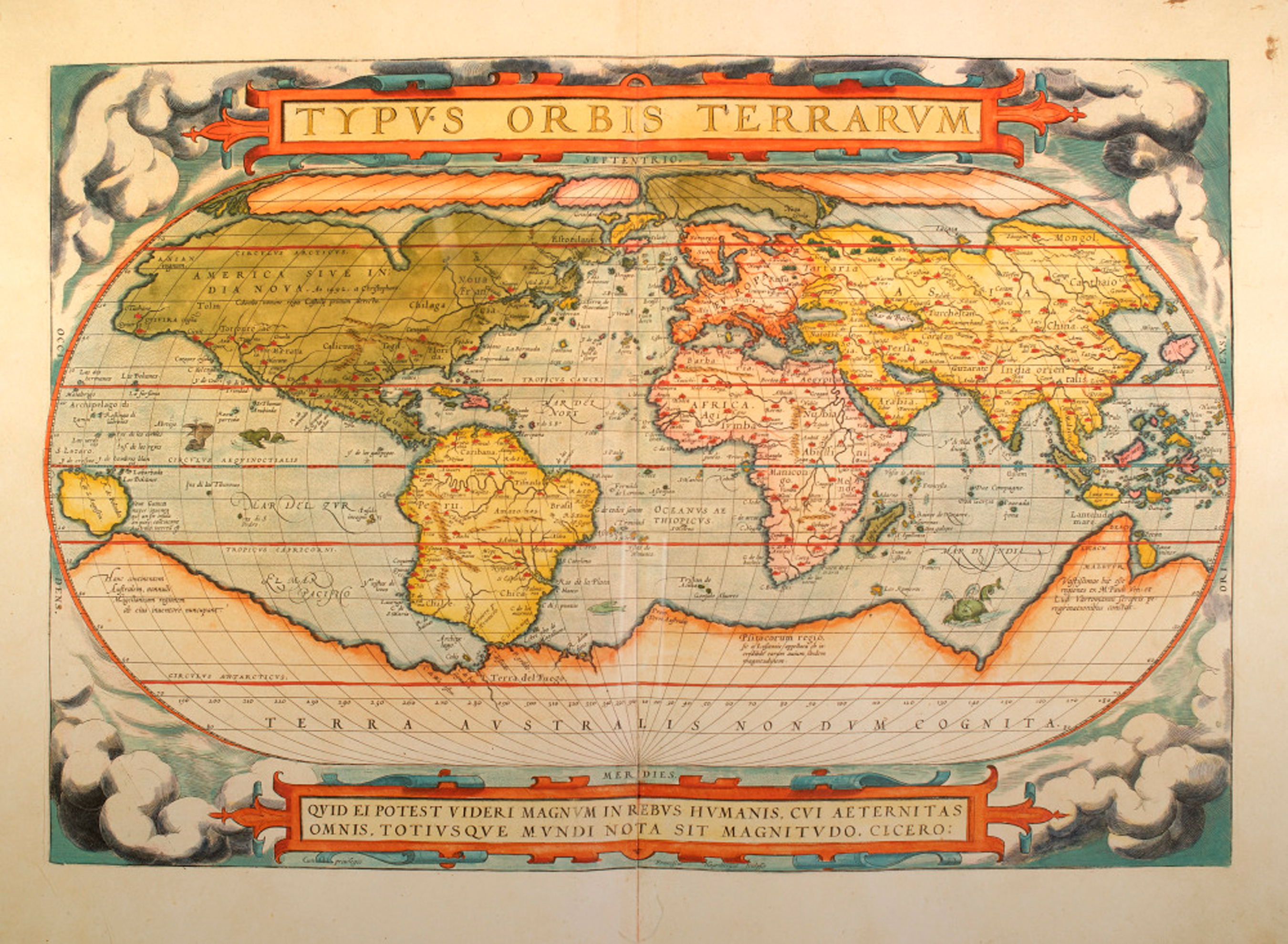
Abraham Ortelius, Theater of the World [World Atlas], 1575. Ink on paper and leather binding; 18 1/2 × 26 3/4 in. © The Phoebus Foundation, Antwerp.
Imagining the World: Early Modern European Art in a Global View
Session 4: Saturday, December 10, 2 pm
In the 17th century, following upon the “discovery” of the Americas in the 1500s, European artists, patrons, and viewers found themselves in an exciting - and disconcerting - wave of globalization. Whether due to the solidification of international trading routes, European countries’ relentless pursuit of colonialism, and//or a desire for religious dominance, Flemish and European artists in the 1600s operated in a world marked by encounters with the unknown.
Led by Rebecca Tucker, a professor of art at Colorado College, participants will examine through case studies how European artists imagined and exploited the opportunities of a global marketplace for art. We’ll also consider the ways that European artworks served and furthered political, social, and religious ideologies in the tumultuous “Golden Age” of the 17th century.
About the Speakers
Katharina Van Cauteren, PhD, is chief of staff of The Phoebus Foundation and curator of the Saints, Sinners, Lovers, and Fools: 300 Years of Flemish Masterworks exhibition. She has curated all of the major exhibitions of the foundation: The Birth of Capitalism, the Golden Age of Flanders (2016), Rooted (2017), Vossen (2018), Lace is More (2019) and The Bold and the Beautiful (2020). Van Cauteren studied art history at Leuven University, earning her doctorate in 2010 with a thesis on the Brussels painter Hendrick De Clerck (1560-1630) and his role as court propagandist for Archduke Albert and the Infanta Isabella. She worked at the Royal Museum of Fine Arts (KMSKA) in Antwerp from 2012 to 2014 as collections researcher and exhibition curator.
Geoffrey Shamos, PhD, is the director of the Vicki Myhren Gallery and curator of the University Art Collections at the University of Denver. He graduated from Yale University and earned his PhD from the University of Pennsylvania, where he specialized in Renaissance art from northern Europe. Prior to joining the University of Denver, Geoffrey worked at the Yale University Art Gallery, the Cantor Center for Visual Art at Stanford University, and RedLine Contemporary Art Center in Denver.
Rebecca Tucker, PhD, is a professor of art at Colorado College. From 2016-2020, she served as director at the Colorado Springs Fine Arts Center at Colorado College. She earned her PhD at New York University, where she specialized in art history in the early modern period in northern Europe and teaches courses in those areas as well as museum studies. She has published in journals such as Art History, Nederlands Kunsthistorisch Jaarboek, and The Seventeenth Century. Since joining the Colorado College faculty in 2003, Professor Tucker has received several teaching awards and served as Director of the Crown Center for Faculty Development. Current and recent projects include a data-driven analysis of women collectors in the Southwest and an edited volume of essays showcasing new approaches to American regionalism.
The BCET Lecture Series presents talks on American and European art from the 15th through the 19th centuries by leading scholars. Series funding is generously provided by the Berger Collection Educational Trust. Additional support is provided by the Michael and Karen Fried Community Education Fund.
Saints, Sinners, Lovers, and Fools: 300 Years of Flemish Masterworks is co-organized by the Denver Art Museum and The Phoebus Foundation, Antwerp (Belgium). It is presented by the Birnbaum Social Discourse Project. Support is provided by the Tom Taplin Jr. and Ted Taplin Endowment, Keith and Kathie Finger, Lisë Gander and Andy Main, the Kristin and Charles Lohmiller Exhibitions Fund, the Samuel H. Kress Foundation, Christie’s, the donors to the Annual Fund Leadership Campaign, and the residents who support the Scientific and Cultural Facilities District (SCFD). Promotional support is provided by 5280 Magazine and CBS4.
